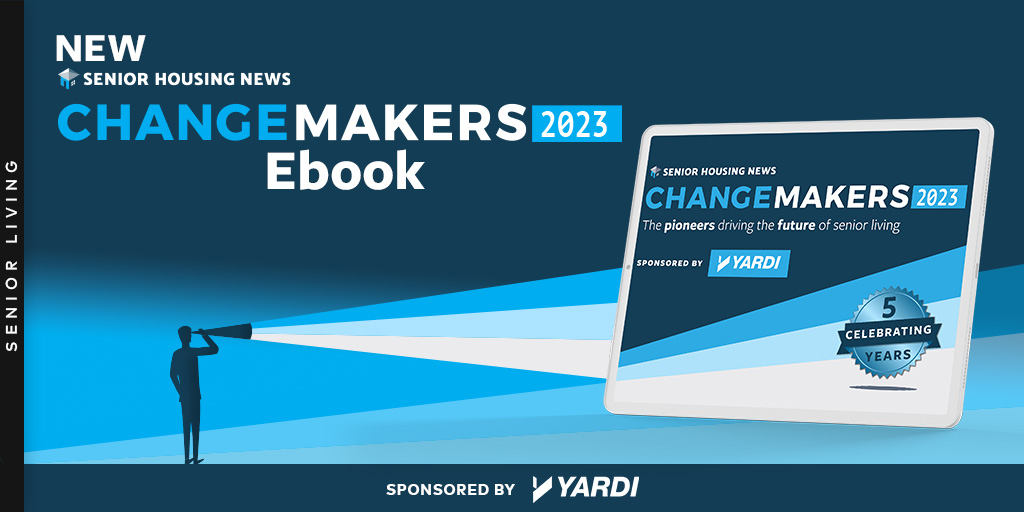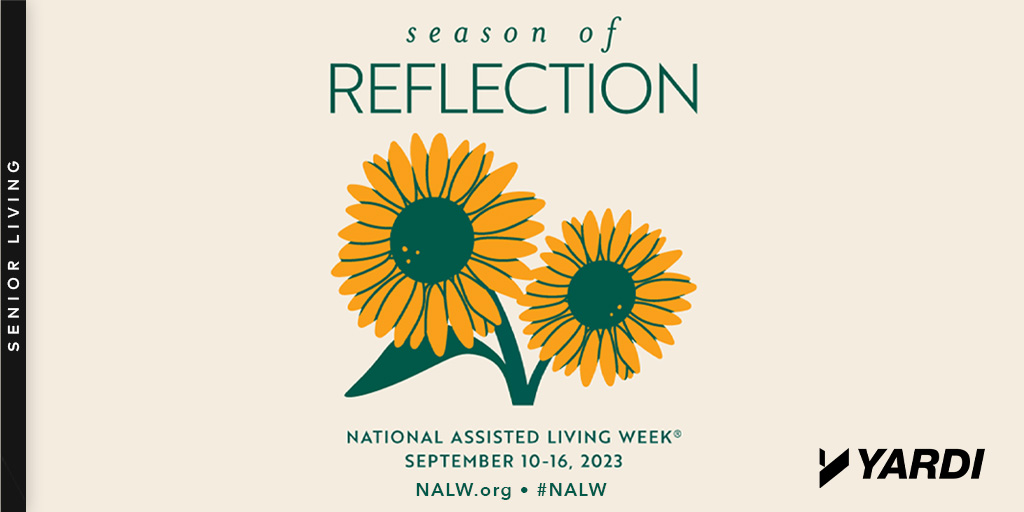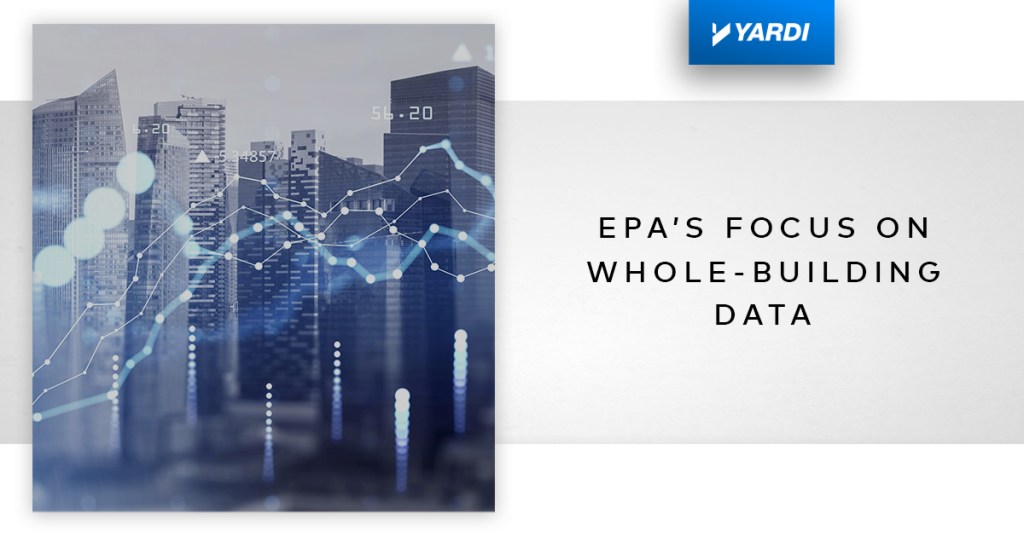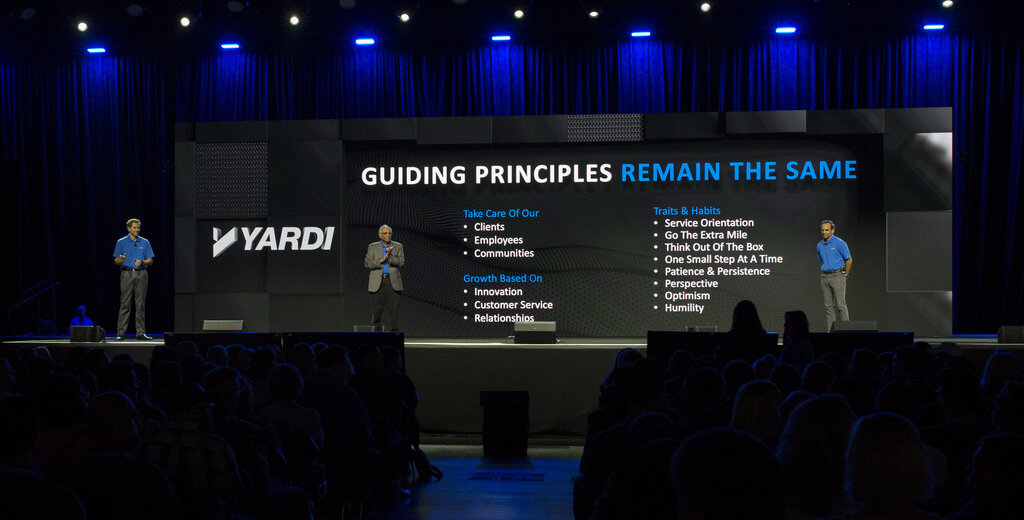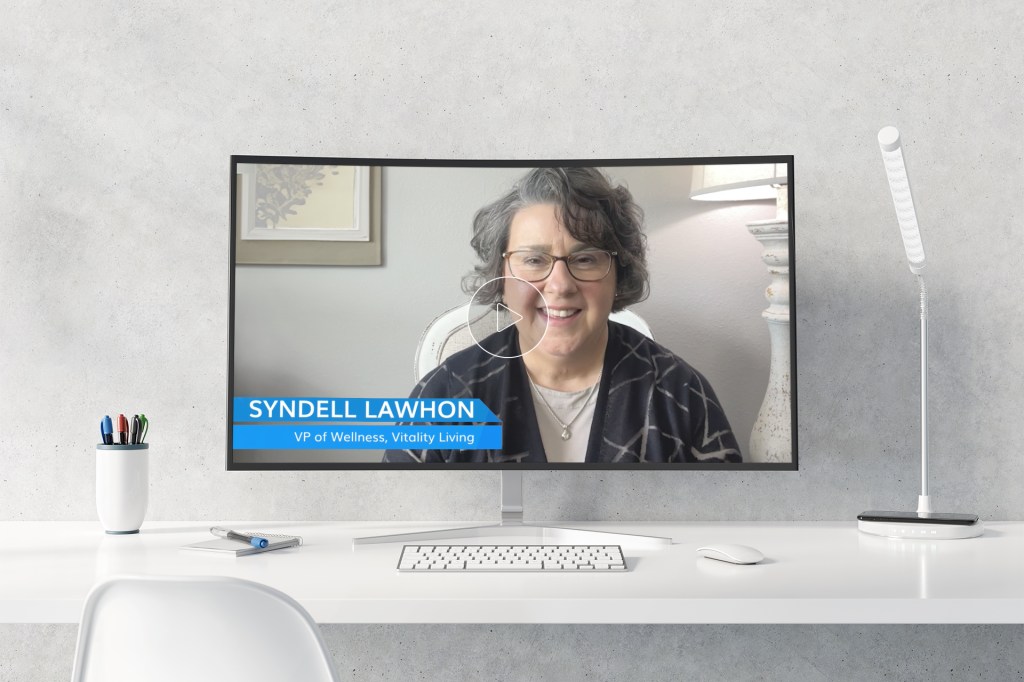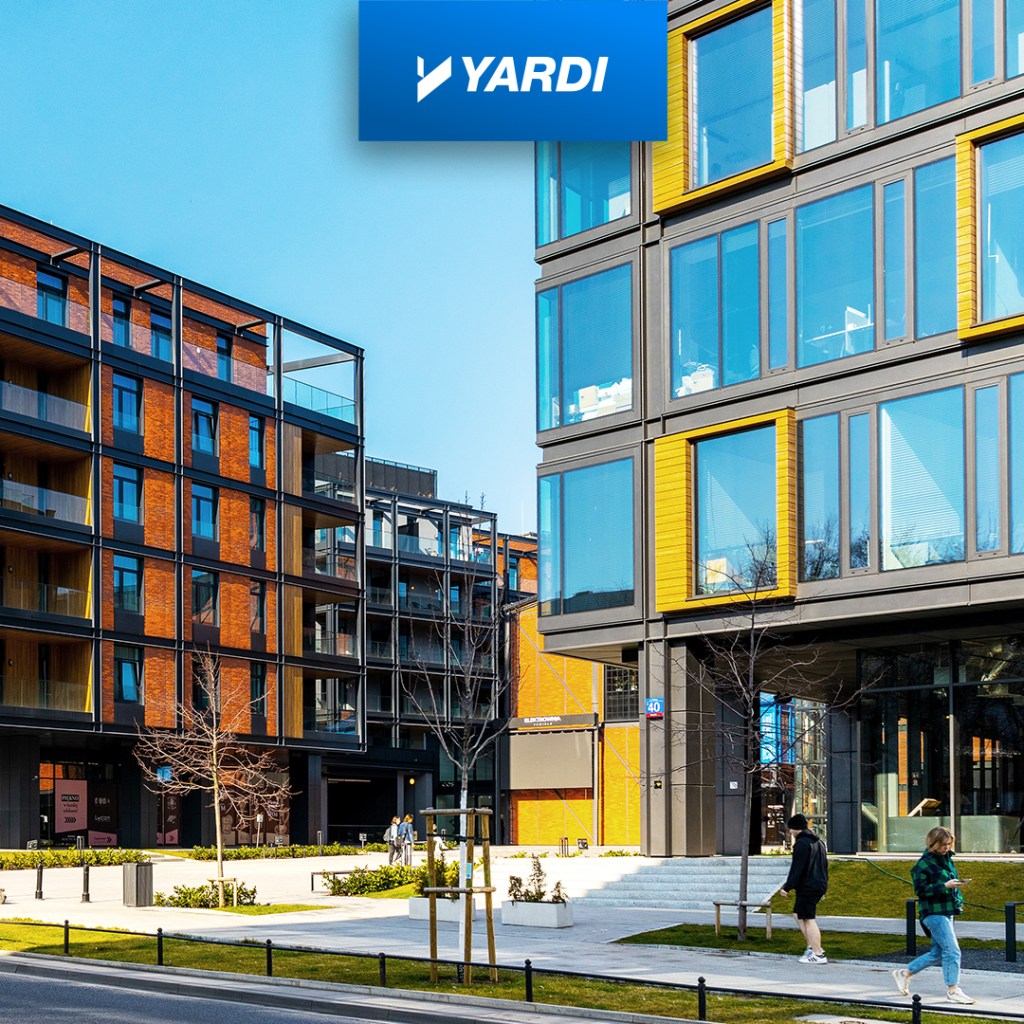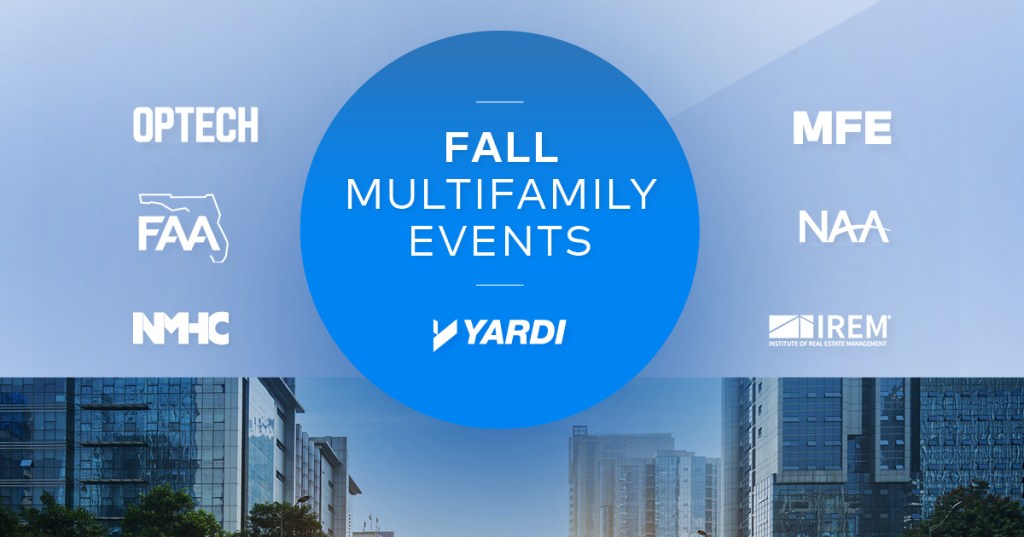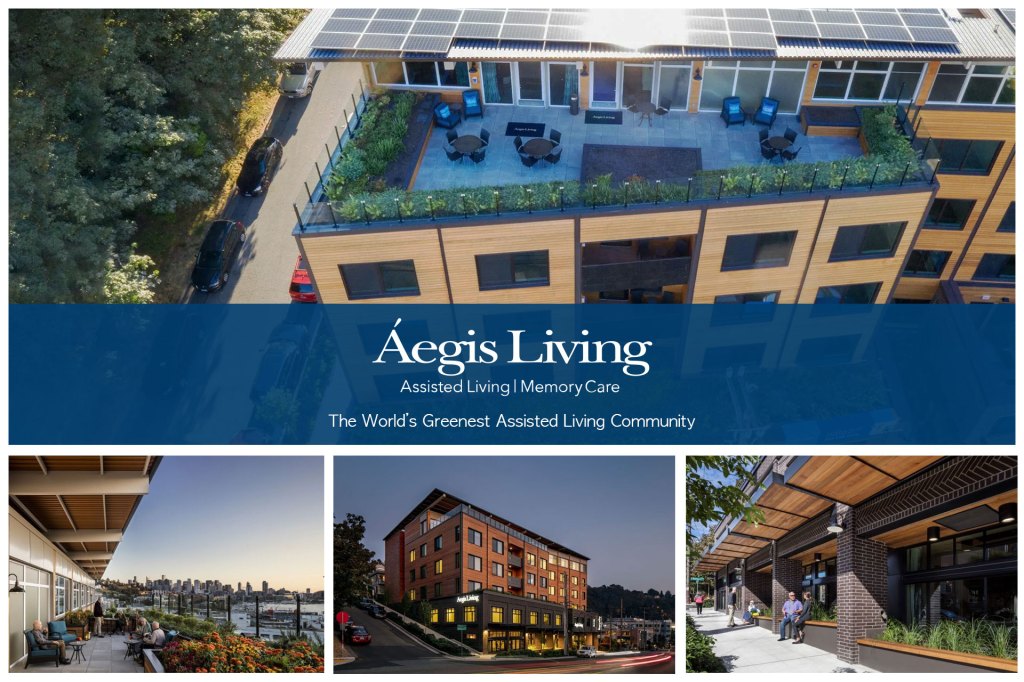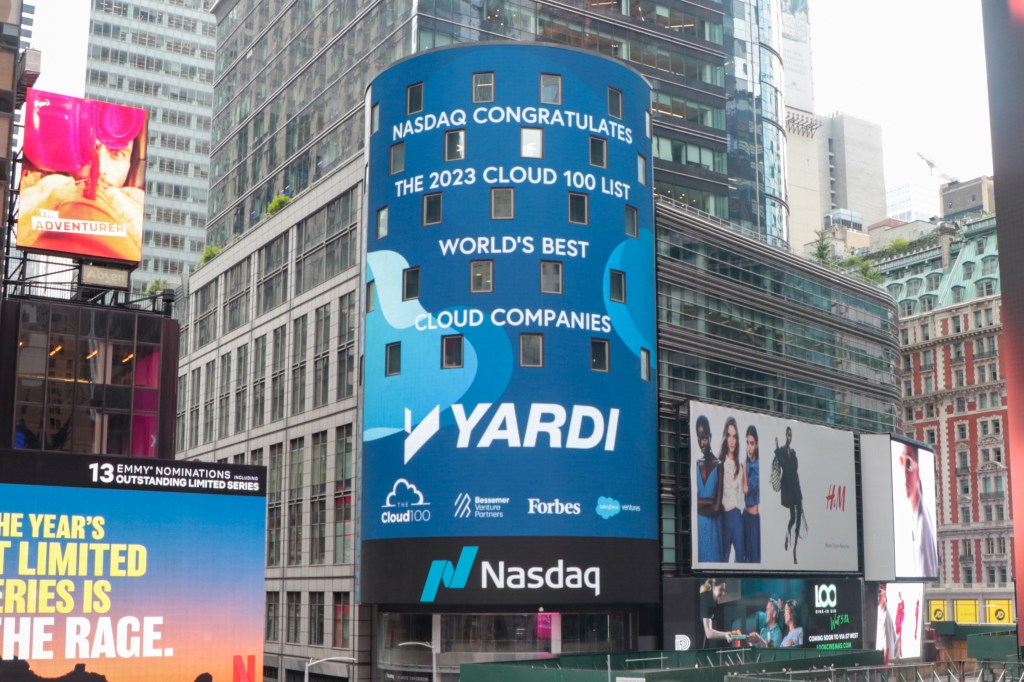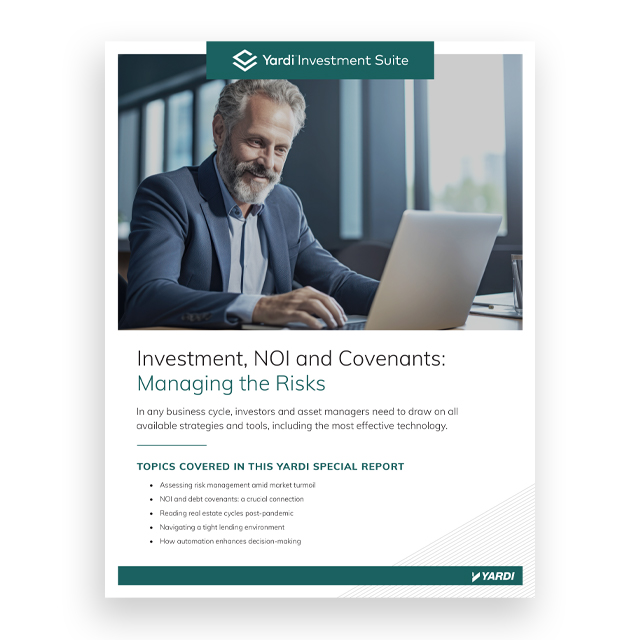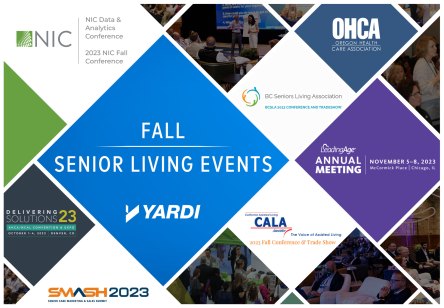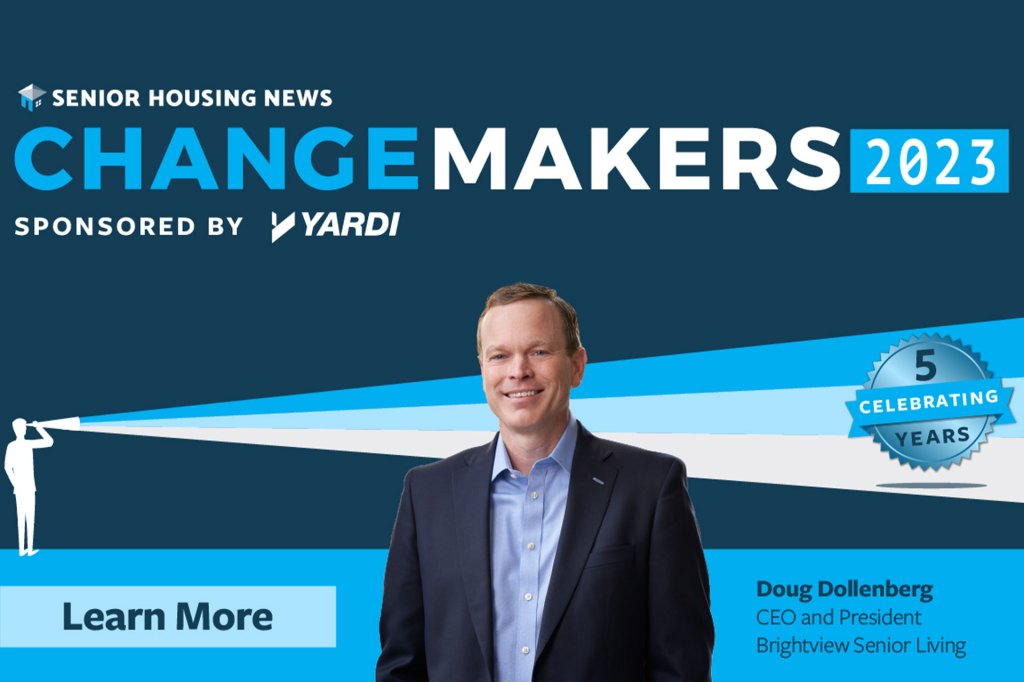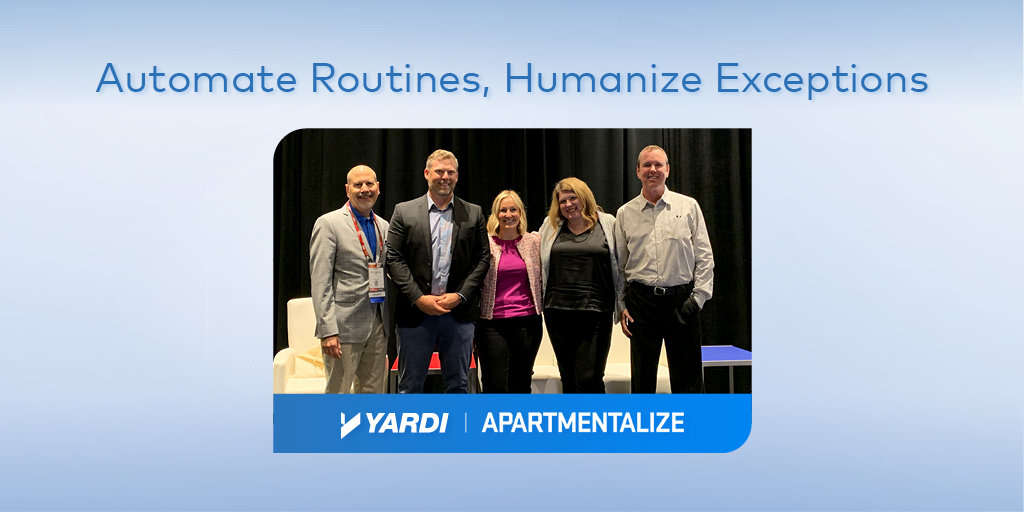It’s a wrap on the 2023 Changemakers series, which we’ve proudly sponsored for the fifth year in a row. We’re delighted to have joined Senior Housing News (SHN) throughout the series to present the class of honorees — nine in total — sharing their insightful interviews here on The Balance Sheet. To mark the conclusion of the series, SHN released a compilation of exclusive interview excerpts in a brand-new ebook. You can download the ebook today to access unseen stories, insights and advice from each Changemaker. Once again, congratulations to each and every Changemaker honoree — Yardi senior living clients included! Yardi clients named 2023 Changemakers With the ebook available now, it’s only fitting we recognize our senior living clients for their interview contributions — and celebrate them for their role in this year’s Changemakers series. We’re so pleased to congratulate: Earl Parker of Commonwealth Senior Living Jodi Guffee of Radiant Senior Living Doug Dollenberg, Jr. of Brightview Senior Living Rod Burkett of Gardant Management Solutions Sarabeth Hanson of Harbor Retirement Associates Doris-Ellie Sullivan of Retirement Unlimited, Inc. About the series As the senior living industry navigates ever-changing challenges, owners, operators and executives are breaking the status quo to adapt and evolve. Leaders have created leaner operations, improved efficiency and transformed the way they do business entirely through technology adoption. Through it all, they continue to push the boundaries of what it means to be industry leaders and visionaries. Now sponsored by Yardi for the fifth consecutive year, the Changemakers series recognizes and celebrates the most innovative leaders in senior living today. Learn more about the annual interview series by SHN. Read this year’s Changemakers ebook We hope you’ve enjoyed the Changemakers series to date — we’ve certainly enjoyed sharing each honoree’s story with you. If you’re ready for bonus insights from this year’s Changemakers, explore the ebook. If you have any questions about how Yardi supports operators with our dynamic senior living software — don’t hesitate to schedule time to connect with...
National Assisted Living Week
Yardi Clients Host Celebrations
National Assisted Living Week (NALW) is here! If you’re unfamiliar, NALW is an annual initiative established by the National Center for Assisted Living (NCAL) that celebrates assisted living communities and the individuals they serve. The week-long initiative encourages communities to offer events in observance of a specific theme — announced by NCAL each year — for residents, family members, staff and volunteers to enjoy. The inspiring theme for 2023 — Season of Reflection — is all about pausing to reflect on the important things in life, including the special bonds created within assisted living communities. And to no surprise, our Yardi senior living clients are doing just that — encouraging thoughtful reflection through a variety of creative events and heartfelt messages across social media. We’re pleased to share a snapshot of what these fantastic clients have done so far, and we applaud each and every community celebrating NALW this year. Not only do the celebrations spark an appreciation for residents, staff and more — but they also help spread awareness on the importance of assisted living in the U.S. Yardi clients celebrate National Assisted Living Week Thrive Senior Living took to social media in spirit of NALW, sharing an informative video with helpful tips for choosing the right community. They also posted a sweet thank you message on LinkedIn to recognize their associates for changing the lives of residents across Thrive communities. “Thank you to all our AL staff for the helping hands you provide,” wrote Thrive in the post. Benchmark Senior Living joined the conversation with a thoughtful blog post focusing on the meaning behind NALW — and their devotion to this year’s theme. Sharing the blog post on LinkedIn, Benchmark wrote, “This year’s theme beautifully encapsulates what it means to feel gratitude for all we have and cherish each moment.” Read Benchmark’s blog post on NALW. Maplewood Senior Living also posted on social media in honor of NALW, sharing their excitement for the celebrations to come and noting the value of assisted living for today’s seniors. “We want to emphasize how assisted living can significantly contribute to seniors leading longer, healthier and more fulfilling lives,” shared Maplewood in the post. We can’t wait to see what else our clients have in store as NALW continues! Be sure to keep an eye on social media for additional posts. More about National Assisted Living Week Established by NCAL in 1995, National Assisted Living Week offers a unique opportunity to recognize the role of assisted living in caring for seniors, as well as individuals with disabilities. The annual observance encourages communities around the country to offer a variety of events and activities to celebrate the individuals they serve — and to help educate members of the public about this distinctive aspect of long term care. Each year, NCAL releases a variety of resources to help communities prepare for the week-long observance, including an extensive planning guide with suggestions for activities, media tips and more. Enjoy #NALW! To join the celebration and help spread awareness, be sure to use #NALW on social media! The observance spans from September 10-16. And be sure to check out the #NALW page on LinkedIn to see what’s been shared so far. From the bottom of our hearts, thank you to those across assisted living for all that you do — Yardi clients included. Not a client and curious to learn how we support communities with our dynamic solutions? Reach out to team...
Partners in Excellence
Yardi’s Fellow ENERGY STAR Honorees
Earlier this year, Yardi earned an ENERGY STAR® Partner of the Year Sustained Excellence Award from the U.S. Environmental Protection Agency and the U.S. Department of Energy after earning designation as Partner of the Year for five consecutive years. The award recognizes Yardi’s efforts in 2022 to help clients benchmark energy and water usage, obtain green financing, expand their energy management skills at Yardi Advanced Solutions Conferences and incorporate ENERGY STAR into an energy management software dashboard. Yardi was joined by a distinguished roster of fellow Sustained Excellence Award recipients from numerous industries across the country. Here’s a sampling. Commercial food service equipment manufacturer ITW Food Equipment Group of Troy, Ohio, increased ENERGY STAR-certified product offerings across its seven brands, trained its entire staff on ENERGY STAR and promoted the program’s benefits to end-users and distributors. ITW also introduced new ENERGY STAR-certified products, such as fryers and ovens, and marketed the program extensively through press releases, blog posts, website content and social media. Los Angeles-based home builder KB Home built more than 12,000 ENERGY STAR-certified homes in 2022 and generated more than 120 million impressions for an upcoming energy-smart connected community development that will include 200+ ENERGY STAR-certified homes. KB Home also promoted ENERGY STAR across various online platforms. Cenergistic, a Dallas sustainability consulting company, benchmarked more than 1,000 properties and integrated ENERGY STAR into all of its client services. The company submitted 341 ENERGY star certification and recertification applications, implemented energy management plans for its clients and posted ENERGY STAR content on social media. Nissan North America Inc., based in Franklin, Tenn., used ENERGY STAR tools and resources to reduce the energy intensity of its North American operations. The motor vehicle manufacturer achieved ENERGY STAR certifications for two manufacturing plants and hosted energy treasure hunts that identified over 18,139 metric million British thermal units in potential energy savings. Nissan also provided pro bono engineer reviews that helped 16 schools earn ENERGY STAR certification. EnergyLogic Inc., a home energy rating and applied building science company in Berthoud, Colo., provided technical support and training for home energy raters, program stakeholders and other industry professionals to ensure consistent application of ENERGY STAR program requirements. Its building science consultations incorporated trends, materials, systems and technologies that enhanced its clients’ ENERGY STAR success in 2022. The Des Moines Public Schools district in Iowa became an ENERGY STAR Certification Nation Premier Member by earning certification for 36 schools in 2022. The district also saved $1 million in energy costs that year. Financial services provider MetLife Inc. of New York City achieved ENERGY STAR certification for 30 properties, published three white papers on decarbonization and launched a campaign to increase the quantity and quality of portfolio-wide whole building energy data. MetLife also established a target to achieve net-zero emissions for its global operations and general account investment portfolio no later than 2050. St. Louis-based smart thermostat manufacturer Emerson Sensi conducted more than 1,200 ENERGY STAR training sessions for contractors in 2022 and offered ENERGY STAR-certified thermostats that are compatible with major smart home ecosystems such as Amazon Alexa, Google Home, Apple Home and Samsung SmartThings. Sensi also featured ENERGY STAR messaging on its retail products’ packaging. See the complete list of ENERGY STAR Award winners for 2023. Learn how Yardi helps commercial and residential real estate companies achieve their energy and sustainability...
Property Energy Data Requirements
The Yardi Role
The U.S. Environmental Protection Agency (EPA) requires commercial and multifamily building owners to improve performance in energy consumption, greenhouse gas emissions, water use among other aspects of building operations. With compliance deadlines approaching, several jurisdictions are stepping up their energy benchmarking efforts. Indianapolis, Miami and New Jersey, for example, have deadlines this year. Deadlines for New York City, St. Louis and Denver come in 2024, with Washington, D.C., Boston and others to follow over the next two years. That’s why the EPA has been working to raise awareness of the importance of aggregated whole building data and ways that states and utility providers can provide it to property owners. This data delivers visibility into energy consumption and helps create a roadmap for instituting ongoing operational improvements. “Demand for this data will grow as building owners seek new federal incentives under the Inflation Reduction Act that require documentation of whole-building performance as a condition of participation,” the EPA says. EPA has also advised states on passing laws that can overcome barriers utilities face in providing data. Such laws can create a path to cover costs associated with providing the data and define requirements to protect individual tenant data. The EPA will launch a full-fledged campaign over the coming months, in partnership with key building owner associations, to raise awareness of the need for this data among state policymakers and utilities. How Yardi can help What is Yardi’s connection to property owners satisfying these EPA requirements? The company’s advanced software and service solutions “simplify the aggregation of whole building data collection and reporting for environmental, social and governance purposes. The first step is gathering data from multiple sources and identifying efficient and inefficient buildings,” says Joe Consolo, industry principal for Yardi Energy. He adds, “Tracking an asset’s performance over time is also critically important. Having received an ENERGY STAR® Partner of the Year Sustained Excellence Award and earned ongoing ENERGY STAR certification for our corporate headquarters, Yardi has the expertise to work with utilities and our client building owners, tenants and residents on these priorities.” Learn more about Yardi’s comprehensive energy management solutions for energy management solutions for residential and commercial...
Voyager 8 Announced at YASC 2023
Infinite Possibilities in San Diego
Yardi’s Advanced Solutions Conference kicked off Wednesday morning with over 4,000 attendees – making it the largest YASC ever – in attendance at the San Diego Convention Center. “We have 4,000 of the best minds in real estate in San Diego this week,” observed Esther Bonardi, a vice president at Yardi, as a packed room eagerly anticipated remarks from Anant Yardi, the company’s founder and CEO; as well as executives Rob Teel, Akshai Rao and Kevin Yardi. Anant Yardi, founder and CEO of Yardi, speaks at YASC in San Diego on Sept. 6, 2023. Photo credit: Julian Thomas, Yardi staff. The YASC opening session always offers an overview of real estate technology trends and insight into how they might play out within Yardi’s single connected solution for real estate companies. This year brought an especially exciting reveal: Voyager 8 is currently in limited release to clients and will be widely available beginning in January 2024. “The biggest thing with Voyager 8 to get excited about is the user experience. The user interface is completely different. It’s a big leap from Voyager 7S. It’s not a leap in terms of the upgrade process, though,” said Rob Teel, president of global solutions. “We are really excited about the upgrade process. This is going to be an opportunity for you to decide which users you want to start using Voyager 8. They can use 7S or 8, so you don’t have to choose. You can allow your users to get comfortable with Voyager 8 as you start to roll this out,” said Akshai Rao, president of residential. Clients were able to get detailed demos and highlights of the forthcoming release in spotlight sessions unique to their real estate verticals on Wednesday morning. In addition to the new user experience and simple upgrade process, Voyager 8 is built for compatibility with artificial intelligence (AI), promising a continual opportunity for real estate companies to use the new technology for efficiency and smoother operations. AI and real estate AI’s implications for business functions like marketing are evident across industries, but what about specific uses for real estate? That question was at the heart of Anant Yardi’s remarks on Wednesday morning. Noting that Yardi is fully committed to making use of AI in the most constructive and beneficial ways possible, Mr. Yardi said that he sees the incorporation of the technology as a gradual one. “The future of AI in real estate is not going to be some big bang type of change, that’s not going to happen,” Mr. Yardi said. He noted that Yardi has already made infrastructure investments that will provide processing bandwidth required for AI systems. Teel and Rao provided a look at Yardi products where AI is already incorporated and will have a growing role moving forward. They include chatbots, which already provide automated answers to prospect questions from multifamily clients; maintenance requests, which could be assigned prioritization and dispatch by AI; and a virtual Voyager assistant who will answer software questions, thanks to AI. “We are fully committed to this change and look at this as an opportunity to grow,” Mr. Yardi said. “Anytime there’s an opportunity to embrace and acknowledge change, I think lurking behind it, you’ll see an opportunity for growth.” Spotlight on corporate philanthropy The general session concluded with a look at Yardi’s corporate focus on philanthropy, which has been a longtime priority for the company. “Our guiding principles over the last 40 years and for the next 40 years are to take care of our clients, employees and communities, and candidly, we don’t often talk about what it means to take care of our communities, so I wanted to take this opportunity to spend a few minutes on it,” said Kevin Yardi, vice president. “We provide funding to our 40 offices around the world and our 9,000 employees help guide funding to nonprofits that are meaningful to...
CRE Diversity
Inspiring Voices
Realcomm’s August two-part webinar series, Celebrating Women and the Diverse Voices in CRE, highlighted the talent, thought leadership and unique mindsets that have enhanced commercial and corporate real estate as more women, minorities and diverse thinkers fill executive leadership positions and advanced technology roles as well as facilitate key vendor partnerships. Insights on career paths and navigating challenges In session one, Leadership, Diversity & Evolving Company Cultures, the executive-level women panelists talked about how workplace culture reflects the values of company leadership and can shape employee interactions as well as promote motivation and loyalty. With new voices in the leadership space, the panel discussed changes in leadership modeling, evolving workplace challenges, the critical role that mentorship plays and how companies are attracting new talent. A big theme among the panelists’ stories of their personal journeys was about receiving mentorship and support and becoming a mentor themselves to help other people advance and open up opportunities. Further, working with good leaders taught them how to become good leaders. Another common theme was about advocating for yourself. Hope Dunleavy, enterprise managing consultant at RealFoundations, stressed the importance of reaching out, being authentic and sharing your story while also listening to others’ stories. The panel agreed on the importance of creating community for support — such as joining (or creating) a women’s group in your organization, which Kelly Soljacich, senior vice president of LaSalle Investment Management, recommended. Veronica Unnikrishnan, partner and senior vice president of innovation, sales and marketing at 5Q Partners, commented that choosing the right organization and positions that will lift you up “is where the magic happens” and will help you grow and develop your career. Further advice included choosing the best opportunity over the most money is a wise decision in the long...
Vitality’s Success With Senior IQ
Senior Living Videos
We love speaking with our senior living clients to capture their journey using solutions in the Yardi Senior Living Suite. And this year, we’ve created quick, engaging testimonial videos to share those journeys with you. Our latest batch includes two videos featuring Syndell Lawhon, vice president of wellness at Vitality Living. Covering Vitality’s success with Yardi Senior IQ, our dynamic business intelligence solution, both videos are packed with insights you don’t want to miss! Read on for a snapshot of what you’ll discover in each video. How Vitality Living’s journey began Before Yardi, Vitality’s data was scattered across siloed solutions, requiring leaders to pull information and generate reports manually. Not only were these processes time-consuming, but they also prevented Vitality from unlocking insights regarding occupancy, falls and more. Not to mention, Vitality’s data wasn’t being updated in real time. Leaders sought a business intelligence solution that would present up-to-date, business-wide data in a visual format — all in one place. That led them to Senior IQ, a trusted solution designed for the unique needs of senior living. How Vitality unlocks actionable information with Senior IQ In our 60-second video with Lawhon, you’ll learn how Vitality now gains actionable information at the click of a button. Presenting real-time data in customizable, sharable dashboards, Senior IQ ensures Vitality’s data is accurate and readily available — allowing leaders to get fast answers to specific questions. Lawhon shares how this equips teams to make important decisions that move the needle. “The value for me is that we can make real-time changes to either resident care or staffing levels,” explains Lawhon. Watch the 60-second video with Vitality. How Vitality makes data-driven decisions with Senior IQ In our two-minute video with Vitality, Lawhon shares more examples of the organization’s success with Senior IQ — expanding on the power of making data-driven decisions. As Lawhon explains, Vitality now has impactful, real-time data which helps teams make decisions that improve resident care, staffing levels, revenue and more. “It has impacted resident outcomes along with giving us a competitive advantage,” says Lawhon, describing the value of Senior IQ. In the video, you’ll also see how leaving manual processes in the past — such as hand-keying data and sorting through spreadsheets — has saved Vitality’s staff a tremendous amount of time. Watch the two-minute video with Vitality. Connect with us Ready for a closer look at Senior IQ? Reach out to our senior living team with questions, or to book a personalized demo. And don’t forget, we have a full library of client testimonial videos that speak to the power of solutions across the Yardi Senior Living Suite! Watch more testimonial videos...
Mixed-Use Success
Main Attractions
Already big in the retail sector, mixed-use projects have become increasingly popular for office developers. Mixed-use developments can deliver accelerated lease-up periods as well as command higher rents compared with standalone properties in the same market. And that’s not all. As some commercial property sectors, most notably office buildings and retail properties, continue to face challenges post-pandemic, investors are more and more attracted to mixed-use projects. Market experts say that the experience economy’s influence on the workplace is a key to retaining talent. It’s a trend that forward-thinking office owners and developers are cashing in on by integrating office space into mixed-use environments. Read on to learn more about key attractions of mixed-use, including what investors are looking for. New development drivers In a May 2022 article on wealthmanagement.com, Nihar Shah, vice president of development at Perseus TDC, an affiliate of Transwestern Development Company, spoke about what’s driving new mixed-use projects. According to Shah, “There are several drivers underpinning a boom in mixed-use projects. One of the main ones is the interconnectivity of uses within a larger master plan. Infill locations work in areas that have amenities already in place, but mixed-use developments create a new built environment in areas that were previously not developed or were underutilized…The new uses usually become a win-win for both investors and cities as they create more housing, retail and tax revenue. But in densely populated areas, a location near public transit is often critical to a mixed-use projects’ success.” Higher average office rents Research shows that office rents at mixed-use developments lease up faster and tend to be an average 24.7 percent higher than those in the surrounding submarket. Not surprisingly, large mixed-use projects are under development across the country and many have already broken ground. From...
2023 Fall Multifamily Events
Discover + Connect
Planning to attend multifamily events this fall and winter? Chances are we’ll be there! This is a great opportunity to strengthen your industry connections and see how a connected system benefits every stage of your workflow. Explore this list to see how you can connect with us at every event. September: Multifamily Executive Conference Mark your calendars for the Multifamily Executive Conference from Sept. 26-28 in Dallas, Texas. This three-day event is a great way to get insights on how to sustain your organization’s success. Learn how to map out your next moves, collaborate with key industry players, advance business strategies and much more. Yardi is proud to be a Platinum Co-Sponsor for this event. Meet with us at booth 210 to make the most out of your time! We’re excited to show you how you can improve your workflows with connected solutions. September: NAA Cultivate Join us in an all-new event: Cultivate, Powered by NAA! Set to take place in beautiful Tucson, Arizona, Sept. 27-28, this retreat-style event is tailored to executives looking to deepen their networking and leadership skills. We are proud to be the NAA Strategic Partner and the General Session Sponsor for this event. Book a meeting with us in advance! With sessions and speakers designed to encourage, motivate and enable reflection, this event is a can’t miss for multifamily executives looking to enhance their people management and leadership strategy. October: IREM Global Summit This year’s IREM Global Summit will be held in Toronto, Canada, Oct. 9-12. As a proud IREM Industry Partner, we can’t wait to show you solutions to help you increase your NOI and drive efficiency. Join Yardi Aspire Industry Principal Patty Evans on October 12, where you can learn how to futureproof your workforce with a futuristic elearning strategy. We’re also proud to sponsor the IREM Gala and Afterparty. Join us as we celebrate IREM members and their accomplishments with a cocktail reception, dinner, drinks and awards. And don’t forget about the Afterparty, where you can wrap up a spectacular week with a fun dance floor. We’ll be happy to see you at booth 1 and 2, but feel free to book time with us in advance. October: Florida Apartment Association Conference & Tradeshow And who could forget about the Florida Apartment Association Annual Conference & Tradeshow happening Oct. 11-13? With numerous speakers and informative sessions to choose from, you can truly customize your time to your learning and networking goals. Yardi is proud to be a platinum sponsor for this event. Schedule time at booth 701 to connect with our team! October: NMHC Student Housing Conference Join us for the NMHC Student Housing Conference in Las Vegas, Nevada, Oct. 17-19. Gather and get inspired with other leaders as you learn and make connections that will shape the future of the industry. Plus, don’t miss Yardi Vice President Jeff Adler on the student housing market economic outlook panel. We are happy to be the Chair Circle Sponsor for this event. See us there at kiosk 3 — or book time with us in advance! November: NMHC OPTECH Conference & Expo Who says you can’t go to Vegas twice in one year? Also in Las Vegas, Nevada: the NMHC OPTECH Conference and Expo from Nov. 1-3. Join us and other leading voices in multifamily as we touch on the most important conversations around the future of multifamily tech and operations. We are pleased to sponsor the registration for this event. We’ll have more information as the event gets closer, but you can always book a meeting with us ahead of time. We can’t wait to see you in person! Curious to see where else we’ll be throughout the year? Check out our full list of events. If you’re interested in learning more about how our connected solutions can help your multifamily company improve NOI across your portfolio, let us know how...
Property Management Jobs
Opportunity Knocks for New Grads
Recent college graduates are now looking for entry-level jobs post-college after enjoying a well-deserved summer break. Here are some tips on navigating the job search for the property management industry. Understanding the current property management job market is vital for job seekers. Those looking to be property managers need to understand that factors like population growth, urbanization and shifts in housing preferences influence demand. Different property management roles include residential, commercial and community association management. Skills that employers seek for entry-level property management candidates include communication, organization, problem-solving and customer service skills. Networking and internships are vital to establish connections and gain practical experience in the industry. An effective property management resume is essential to stand out to potential employers. Make the resume customized. Tailoring the resume to each job application is necessary, aligning the content with the specific job requirements. Include relevant sections like objectives, skills, education, experience and achievements. Quantify the achievements by demonstrating impact. For example, “managed a portfolio of X properties” or “increased resident satisfaction by y%.” Highlight skills such as lease administration, maintenance coordination and software proficiency, especially with property management tools and CRM software. Online courses and certification for property management can enhance a candidate’s qualifications and knowledge. Look into certifications offered by the National Apartment Association Education Institute (NAAEI), such as Certified Apartment Manager (CAM) and Certified Apartment Maintenance Technician (CAMT). The Institute of Real Estate Management (IREM) courses and certifications, such as Certified Property Manager (CPM), provide in-depth knowledge of property management practices. LinkedIn Learning has many relevant courses that cover property management principles, real estate law and related skills. Speaking of online, an online presence can significantly enhance an applicant’s visibility in the job market. LinkedIn optimization will create a professional LinkedIn profile highlighting skills, experiences and aspirations in property management. Encourage connections with professionals in the industry. Create a personal website that showcases resumes, portfolios, blog posts and relevant projects and hobbies. Build an online portfolio showcasing achievements, property management projects and any other published content related to the field. This can help set you apart from other candidates. Be sure to clean up anything employers would frown upon, such as pictures from the latest Coachella festival or playing beer pong with friends at parties. As the field evolves, staying informed about industry trends is crucial in property management. Read up on industry publications and reputable magazines and websites like Multifamily Executive, National Apartment Association (NAA) and Yardi Matrix, which regularly publish articles and reports on property management. Read up or listen to industry-specific blogs and podcasts that cover topics ranging from technology advancements to property investment strategies. Look into upcoming webinars and conferences that property management professionals can attend to learn about the latest trends and network with others in the field. Networking goes a long way. Keep business cards from conferences to refer to when applying for jobs. In today’s world, it is all about who you know to get ahead or that inside connection. We hope this provides valuable insights and actionable advice that will help you succeed in securing entry-level jobs in property...
Ready for Success?
See the Yardi Investment Suite
Why are many leading real estate investment managers increasingly turning to the Yardi Investment Suite? Because this end-to-end solution delivers: Efficiency through automation. Automation reduces double entry from timesheets and disparate data systems. It also enables investors to access reports and forms wherever and whenever they want. Automation factors into increasing portfolio size without adding staff. Yardi Investment Manager, an element of the suite, automates subscription agreements through e-signature, capital calls and distributions. “The Investment Suite makes life easier for our real estate investment team, and thus our clients, by eliminating the need to integrate and validate data from multiple sources,” says Joe Biddle, director of IT for Baltimore-based real estate investment manager ABR Capital Partners. Another example of efficiency comes from Holladay Properties. The full-service commercial real estate firm in South Bend, Ind., saw a five-fold increase in its investor base in five years. Keeping pace with that growth required greater efficiency in every area of the company’s business – which the Yardi Investment Suite enabled. “We not only succeeded in satisfying all client expectations. And we did it without needing additional staff,” notes Wills Gardner, Holladay’s director of capital planning. Success through centralization. Centralizing all communication, transactions and opportunities on the Yardi Investment Suite platform also serves to simplify the investment lifecycle. “We use Yardi Investment Manager to call capital, make distributions through waterfall promote structures and eliminate manual tracking of capital activity,” says Scott McGinness, CFO, of Cohen Asset Management Inc., a Los Angeles-based private real estate investment company. McGinness continued: “Our staff doesn’t have to spend time assembling information from disparate sources, then preparing and distributing it. They can direct their energies to more productive activities such as researching investment opportunities and strengthening client relationships.” All information, when investors want...
Lifestyle Offices
Help Retain Top Talent
Since the pandemic, companies have had to adjust to keep their customers returning. For example, movie theaters are finally starting to see box office numbers like in 2019, but how are they getting people out of their comfortable living spaces and coming to the movies? Because viewing options at home are limited, and most need more space for a 60 by 80-foot screen, IMAX theaters are growing, but smaller, older theaters cannot keep up with amenities. Sounds familiar for the return-to-office issues companies are having. Lifestyle offices have become attractive for top talent seeking a modern and progressive work environment. Let’s discuss how traditional rigid office structures and work-life integration play a significant role for talented individuals who value flexibility and freedom in their work. Lifestyle offices are the IMAX version of an office building, packed with amenities and features that support work-life integration, such as flexible work hours, remote work options, on-site childcare/dog care facilities, and relaxation areas with greenery and wellness programs. These initiatives contribute to reduced stress, increased productivity and improved employee satisfaction. Aesthetically pleasing workspaces contribute to a positive work environment. Open-plan layouts with natural lighting and biophilic design elements promote employee satisfaction. Many more extensive tech or finance companies are moving to this type of office style since they have the budget to afford the construction and high rent prices. One Brickell City Centre in Miami has done just this. Featuring sustainability and is the first LEED gold-certified commercial building with sustainable architectural features. They offer gorgeous city and ocean views from each building floor, along with flexible workspaces. Other places in New York, California and Boston have ample lifestyle offices for regional transit access, dramatic outdoor terraces, top-of-the-line security and plenty of amenities. Some offer perks for exclusive...
Yardi Client Aegis Living
Debuts “Greenest” Community
Creating environmentally conscious, sustainable buildings is more important than ever. Yardi client Aegis Living knows just how important, considering they’ve created the world’s “greenest” senior living community — Aegis Living Lake Union. Opened in 2022 and located in Seattle, Washington, Aegis Living Lake Union is completely emission-free, using no fossil fuels. Considering the dedication of Aegis Living in creating this spectacular community, we simply had to spread the word here on The Balance Sheet. A round of applause for Aegis Living in creating a sustainable place for residents to call home! Read more about the initiative at Aegis Living Lake Union below. Aegis Living creates world’s greenest senior living community Aegis Living Lake Union is no stranger to sustainability. Relayed by McKnight’s Senior Living, the community’s environmentally conscious design is a commendable achievement — and an inspiration to others in the industry. Impressively, standard electricity supports the entire 70,000-square-foot building at Aegis Living Lake Union, which offsets 105% of the structure’s total energy demand. The community implemented a variety of energy reduction measures to achieve this, including an onsite solar array and offsite solar energy farms. When compared with similar buildings, the community has reduced its total energy draw by 25%. “When we embarked on the journey to create the world’s greenest senior living building, our goal was to set a new standard for what is possible, bringing an equal commitment to sustainable buildings and exceptional senior living,” Aegis President Adam Clark shares with McKnight’s Senior Living. “We made this dream a reality and hope to be a model for others serving our rapidly growing aging population.” In terms of recognition (and well-deserved recognition at that), Aegis Living Lake Union is one of ten developments that’s been selected for the 2023 Urban Land Institute Americas Awards Of Excellence — and it’s the only senior living community to be recognized. It’s also the first assisted living community to meet the global green building standards set by the International Living Future Institute. About Aegis Living Aegis Living is a leader in senior assisted living and memory care. With more than 25 years of experience, Aegis is known for its deep expertise in supporting residents along the continuum of care, innovative programming, a focus on purpose-built design and an employee-centric culture. With every community, Aegis creates a living environment where residents can feel at home and inspired to live life to the fullest. The organization is headquartered in Bellevue, Washington, and operates 36 communities in Washington, California, and Nevada. Connect with us Once again, congratulations to Aegis Living for this outstanding achievement. Be sure to read more about the environment-first approach at Aegis Living Lake Union via McKnight’s. If you’re wanting to know how we support clients like Aegis with our senior living management software, reach out to our team! We’d love to show you around the Yardi Senior Living...
2023 Forbes Cloud 100
Yardi Named to Eighth Straight List
Yardi has been named to the 2023 Forbes Cloud 100, the definitive ranking of the top 100 private cloud companies in the world, published by Forbes in partnership with Bessemer Venture Partners and Salesforce Ventures. Yardi was a member of the inaugural Cloud 100 in 2016 and is the only company focused on the real estate vertical this year. “We’re honored that Forbes continues to recognize Yardi for our cloud technology and services,” said Jay Shobe, senior vice president of cloud services at Yardi. “Since the inaugural list, this inclusion has reflected the continual efforts of our employees and the unfailing support of our clients worldwide.” The Cloud 100 again reviewed submissions from hundreds of cloud startups and private companies. The Cloud 100 evaluation process involved ranking companies across four factors: market leadership (35%), estimated valuation (30%), operating metrics (20%), and people and culture (15%). “The companies of the Cloud 100 list represent the best and brightest companies in this crucial tech sector,” said Kenrick Cai, Forbes editor of the Cloud 100. “This year’s companies had to react rapidly to AI’s sweeping impact while contending with a market pullback. Their resilience puts them in elite company.” “This year’s Cloud 100 list is one of the most dynamic in history. While the industry faced macro headwinds, the 2023 Cloud 100 winners displayed the innovation and resilience of the cloud economy and the combination of growth and efficiency that prove the power of the cloud business model. 95 percent of the honorees are forecasted to reach Centaur status — $100 million of annual recurring revenue — by the end of the year,” said Mary D’Onofrio, partner at Bessemer Venture Partners. “It is further exciting to see so many honorees at the forefront of the AI revolution, which we believe will continue to transform the cloud and propel the next wave of growth for many of this year’s winners.” “The past year our industry has seen a generational step forward in innovation and with AI leading the charge, we are witnessing one of the most important platform shifts in decades,” said Paul Drews, managing partner, Salesforce Ventures. “The Cloud 100 list represents the best of the best and we’ve never been more excited about what the future holds, not only for the cloud but for the entire technology industry. We are proud of what these founders and their communities have already accomplished and look forward to seeing how they continue to transform the industry in the future.” The Forbes 2023 Cloud 100 is published online at forbes.com/cloud100 and will appear in the August/September 2023 issue of Forbes magazine. About Yardi Yardi® develops industry-leading software for all types and sizes of real estate companies across the world. With over 9,000 employees, Yardi is working with our clients to drive significant innovation in the real estate industry. For more information on how Yardi is Energized for Tomorrow, visit yardi.com. About Bessemer Venture PartnersBessemer Venture Partners helps entrepreneurs lay strong foundations to build and forge long-standing companies. With more than 145 IPOs and 300 portfolio companies in the enterprise, consumer and healthcare spaces, Bessemer supports founders and CEOs from their early days through every stage of growth. Bessemer’s global portfolio has included Pinterest, Shopify, Twilio, Yelp, LinkedIn, PagerDuty, DocuSign, Wix, Fiverr, and Toast and has $20 billion of assets under management. Bessemer has teams of investors and partners located in Tel Aviv, Silicon Valley, San Francisco, New York, London, Hong Kong, Boston, and Bangalore. Born from innovations in steel more than a century ago, Bessemer’s storied history has afforded its partners the opportunity to celebrate and scrutinize its best investment decisions (see Memos) and also learn from its mistakes (see Anti-Portfolio). About ForbesForbes champions success by celebrating those who have made it, and those who aspire to make it. Forbes convenes and curates the most influential leaders and entrepreneurs who are driving change, transforming business and making a significant impact on the world. The Forbes brand today reaches more than...
Reducing Risk
Yardi Investment Suite Report
What are the risks in the current real estate investment environment and how can investors protect themselves? A new Yardi Investment Suite special report gives investors and investment managers an inside look at challenges in the industry and how to use advanced technology to their benefit. Rising interest rates and a spate of high-profile bank failures have induced a cautious stance among real estate investors. While few experts predict a downturn as dire as that in 2008-09, capital sources are lending more cautiously. As a result, the report notes, investors are seeking ways to drive new efficiency into their operations. Using tech to mitigate risk Much of that efficiency comes from investment management technology platforms that automate investment accounting, performance measurement and investor reporting, along with loan abstracts, asset ratings, sales data, net operating income data, and valuation tracking and occupancy trends. By connecting information from the asset level through the investment structure to the investment, such systems drive informed decision-making by eliminating manual data uploads, spreadsheets and the effort associated with maintaining separate databases. Used to their full extent, such platforms can help investment managers uncover profitable deals, hit compliance targets and satisfy investors by using secure portals to deliver timely data down to the property level. “Minimizing human error and eliminating old-fashioned filing systems are clear benefits of automation” for investors and investment managers concerned with monitoring debt covenants, evaluating property performance and other elements of real estate investment, the report says. The notion of bridging the gap between the underlying asset and the loan encompasses not so much the terms of the loan – its calculations and amortization – as “the critical data and covenants and the things that pose the risks to the organization,” Chris Barbier, senior director of investment...
Energy Projections
From U.S. DOE
Here are recent projections by the U.S. Energy Information Administration (EIA), a statistical and analytical arm of the U.S. Department of Energy that collects, analyzes and disseminates energy information. Record liquid fuel consumption coming in ’24 Global consumption of liquid fuels such as gasoline, diesel and jet fuel will set new record highs in 2024. After topping an average of 101 million barrels per day for the first time in 2023, consumption will average more than 102 million barrels per day the following year. Crude oil prices will decline in that time, however, largely due to increases in crude oil production, especially in North and South America. That could also drive prices lower at the pump. The price decline prediction holds despite announcements in 2022 and 2023 by the OPEC+ oil exporting cartel to cut crude oil production by about 3.5 million barrels per day. “Our forecast for global consumption of petroleum depends on uncertain economic conditions—especially in China,” said EIA Administrator Joe DeCarolis. “How China’s economy changes following its reopening from pandemic lockdowns could have a significant impact on global consumption of petroleum products.” Coal down, renewables up The share of U.S. electricity generated from coal will decrease from 20% in 2022 to 18% in 2023 and 17% in 2024. Meanwhile, the share of renewable energy as a source for electricity generation continues to increase and is projected to reach 26% of total generation in 2024. About two-thirds of the forecast increase in renewables generation comes from new utility-scale solar photovoltaic capacity, with most of the rest anticipated from new wind projects. About 5% of U.S. coal-fired electric-generating capacity retired in the 12 months before April 2023. Investment in renewable sources such as wind and solar and the operating cost advantage of those...
Meet With Yardi
Fall Senior Living Events
With a variety of senior living events coming this fall, leaders have the chance to explore which technology solutions are driving the industry forward. We’ll be attending a handful to share what makes the Yardi Senior Living Suite — our integrated, one-stop-shop solution — stand apart from other technology in the senior living space. In that spirit, we’d love to connect with you if you’re attending any of the below opportunities! Read on for more details about our presence at each event. OHCA Annual Convention & Tradeshow Join your fellow senior living leaders at the Oregon Health Care Association Annual Convention and Tradeshow!You’ll find our senior living team at booth 309 — feel free to stop by anytime throughout the event, or schedule a meeting with us in advance. We’re excited to be the awards program co-sponsor as well. Date and location: September 19-20, 2023 Portland, Oregon BCSLA Annual Conference & Tradeshow Meet with us during the BC Senior Living Association Annual Conference and Tradeshow, an event centered around mental health and wellness, immigration, recruitment retention and leadership. You can schedule a meeting with team Yardi before the event, or simply come chat with us whenever you’d like. Date and location: September 24-26, 2023 Whistler, British Columbia NIC Data & Analytics Conference The upcoming NIC Data and Analytics Conference is the first of its kind for the National Investment Center for Seniors Housing and Care (NIC), set to gather data and analytics leaders in senior living to discuss important industry trends. We’re pleased to be a sponsor for this one-of-a-kind experience and our team will be in attendance throughout the event. You can book time with us here if you’d like to schedule a meeting! Date and location: September 27-28, 2023 Minneapolis, Minnesota...
Yardi Dubai
UAE Office Update
#TeamYardi of Dubai is here again, showcasing their influential excitement in and out of the office. Here are a couple of updates from the Dubai office. Bring Kids to the Office Bring Kids to the Office was an exciting event and opportunity for Yardi’s wonderful parents to introduce their kids to the place where parents spend a significant part of their day. Employees had the chance to share the work environment with little ones and create an engaging and fun atmosphere for everyone in the office. The day was jammed packed with a range of activities suitable for children of different ages: Office tours– Kids had the chance to explore the office and learn about what their parents do when working. Interactive fun– entertainment included balloon twisting, face painting, games and music with party hosts. Snacks, treats & sweets to keep the energy level up throughout the day. “We were so excited to see the workplace come alive with the laughter and joy of our employees’ little ones. It was undoubtedly a fantastic day of bonding and creating cherished memories together,” exclaimed Oksana Goliak, Yardi Dubai office manager. Fostering Healthy Competitions The friendly yet competitive nature of employee team building encourages employees to showcase their skills while cheering on their teammates. Healthy competition can instill a sense of pride and accomplishment, motivating individuals to work harder as a team. Moreover, the Cup cultivates a supportive environment where employees celebrate each other’s successes and learn from their setbacks, strengthening team bonds. The Yardi Sports League continues with a new season for 2023 and promotes employee well-being. Recently, Yardi Sports League held a Table Tennis Cup: a fantastic team-building event promoting physical fitness and enhanced employee teamwork, communication and camaraderie. Be sure to check out all...
Celebrating Doug Dollenberg, Jr.
Changemakers 2023
“I don’t get excited about change, per se, but I’m very comfortable with change. I fundamentally believe that change is an important part of the formula for business success.” That quote comes from Doug Dollenberg, Jr. — the final honoree in the 2023 Changemakers series by Senior Housing News (SHN)! It’s been a pleasure to sponsor the series for the fifth consecutive year, we’ve loved celebrating each senior living visionary recognized. Keep reading for a snapshot of Doug Dollenberg, Jr.’s interview, which is packed with insightful stories and advice. Yardi client Doug Dollenberg, Jr. named 2023 Changemaker For Doug Dollenberg, Jr., president and CEO at Brightview Senior Living — a dedicated Yardi client — change isn’t just inevitable, it’s necessary. Since joining Brightview in 2017, he’s led changes that have positively shaped the organization to be what it is today — and he’s learned valuable lessons through it all. In his interview with SHN, Dollenberg shares why he thinks change is essential in the senior living industry, and explains the importance of driving collaborative change. He also shares how his experience at Brightview has reinforced his passion for people and culture — and speaks to the organization’s plans for the future. SHN: What are some ways that you think the senior living industry needs to change in the next five years? Dollenberg: Staffing is one. Two, resident experience. Three, embracing technology and innovation. And four, rebounding margin. On the staffing front, turnover is a huge challenge in the senior living industry. It is in plenty of others, but especially in senior living. And we need to attract more people to the industry and help people realize that senior living is a great industry and a great place to build a career. There are tremendous career opportunities in our industry, and we’re only going to need more and more people over the next decade. There’s already something like a million people who know it’s a great industry, but we have to attract more people to it. I think it’s going to require creativity and innovation and change to get more people to enter our great industry. We also have to figure out ways for Brightview and for the industry as a whole to figure out how to increase retention. Another is resident experience. Our resident needs and desires are evolving, and we need to be focused on addressing that for the residents of today — and also the residents of the future. The baby boomers, they’re not really entering our communities in the next handful of years, but as you go out 5, 10, 15 years, we really have to be thinking about them. As we’re looking at today’s residents and future, we have to be looking at what are the changes that impact our operations and the communities we develop for the future. The third area that I mentioned is embracing technology, innovation and process improvement with the goal of driving efficiencies. I think that’s increasingly important in our industry, as we’re focused on margin. We have to search for and create efficiencies in our business, and so much of that is going to come back to those things that I mentioned: Technology, innovative and creative ideas, and process improvement. The fourth big change in my eyes is margin rebound. Ultimately, our industry needs to get back to the operating margins that we had pre-pandemic, whether that’s getting back to or near those pre-pandemic margins. That’s something that needs to happen, and that is the function of building occupancy, driving revenue, and managing costs. I feel the industry is working on that, which is a good thing. And personally, I feel really good about the progress that our Brightview team is making on that front. SHN: How do you think about timing so that Brightview can innovate without getting so far ahead of the market that...
Automate Routines, Humanize Exceptions
Apartmentalize Session Recap
At 2023 Apartmentalize powered by NAA, Yardi Vice President Richard Malpica led a panel with multifamily executives about how staffing challenges are driving the need for automation and centralization. Meet Berkshire Residential Investments Vice President of Marketing Justin Wald, Fogelman Properties Vice President of Shared Services Kim Young, ROSS Companies Vice President of Marketing Taylor Blades and Westdale Asset Management Technology Director Jaymz Yates. What do these leading voices in multifamily have in common? They’re all leveraging technology to maximize staff satisfaction, enhance customer experiences and improve efficiencies. Session panelists at the 2023 Apartmentalize education conference. From left: Yardi’s Richard Malpica, Berkshire Residential’s Justin Wald, ROSS Companies’ Taylor Blades, Fogelman Properties’ Kim Young and Westdale’s Jaymz Yates. Read on to learn about their challenges, strategies and how they’re taking on automation and centralization to automate routines and humanize exceptions. Richard Malpica: What kind of staffing constraints is your company experiencing, and are there any new expectations the industry needs to adapt to? Justin Wald: Expectations have changed for our onsite employees. They now expect being able to work from home in addition to a higher salary. On the other hand, our prospects and residents have the expectation of immediate gratification. So, we’re really taking a step back and thinking about ways to provide the right tools for everyone’s satisfaction. Kim Young: One of the biggest things for us is onboarding. We now know to ensure that our tech is in place before a turnover occurs so the transition is as smooth as possible. Taylor Blades: Today’s employees don’t want to spend hours working leads, handling maintenance tickets or paying invoices. I think we could improve retention if we move them away from these tasks and give them more time to make an impact with prospects and residents. Today’s employees want to be involved in higher levels of thinking, not necessarily just leasing apartments or responding to emails and answering the phone. Jaymz Yates: I think we also need to be mindful and recognize that what we’re expecting out of our staff is different from what it was 10 years ago. We could look at it in a way where we’ve given them tools for success, but we’ve also put an additional burden on them to learn those new tools. It’s hard enough to hire staff, but now we expect them to manage multiple lines of channels and communications. Richard Malpica: Today’s workers place a bigger emphasis on their wellbeing. How is your company providing a work experience where employees are invested, participate in more than just rudimentary tasks and feel supported by automation? Kim Young: Our industry has a reputation of creating a pipeline where someone can start out as a leasing agent then become an assistant manager, property manager and possibly a regional vice president. But the problem is that those roles each require a different skill set. It’s not a natural progression, and that’s always been a problem. With automation, you can take a skilled leasing agent and help them deepen their practice, or help an entry-level employee excel in their field. It can be a tool to guide career paths. Richard Malpica: Everyone is interested in what automation can do. How are you utilizing automation to attract and retain the best employees? Taylor Blades: We might be in a position now where employee turnover is almost more costly than resident turnover. Some of the things we’re doing to add value to our employees’ work lives is removing the high-volume, low-value tasks out of their daily routine. We successfully implemented a bot that could handle leads from any channel. This helped our staff focus on building a connection with our residents, hosting events and making meaningful interactions. Our residents’ needs are aligning with our employees’ needs. Kim Young: We’re trying to highlight the fact that automation improves our workflow. Our leasing teams are not going to suddenly...

